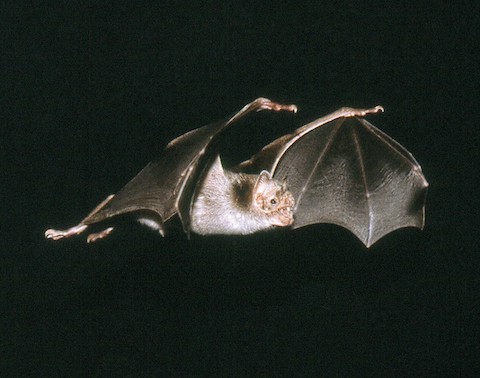
Credit: Uwe Schmidt, via Wikimedia Commons
It may surprise you to know there are 1,400 species of bats—they make up 20% of all mammal species.
They have wingspans ranging from 6 in to 5 ft and occupy dozens of environmental niches.
Some are specialized to eat fish. Tiny vampire bats drink blood (usually from sleeping livestock, without harming them).
But the most important bats, to humans anyway, are those that eat insects, providing up to $50 billion worth of free pest control for our agriculture every year.
They also eat mosquitoes that spread disease. A single bat can eat thousands of mosquitoes a night.
Fruit- and nectar-eating bats are important pollinators for hundreds of plant species, including many that humans eat. And scientists are finding other reasons to like bats.
As they age, bats produce more mRNA to counteract degradation in their cells. Perhaps this is why bats live four times longer than similar-sized animals, and longer than humans when adjusted for size. Their resilient aging traits may help researchers find ways to improve our own aging.
Bats have gotten a bad rap lately for viruses spilling over into human populations. But epidemiologists don’t blame this on the bats, instead on habitat destruction and wildlife markets.
Ironically, bats are largely unaffected by viruses. By studying their immune response, we may learn more about how humans can battle all viruses.
Background
Synopsis: Bats have been associated with evil, witchcraft and death in some cultures, but they are fascinating and diverse, and essential to agriculture. Some bats are cute, while others are bizarre looking. They are the only mammal that can fly—bats have been flapping around for more than 50 million years. Their 1,400 species echolocate to hunt or navigate, and many provide essential help to agriculture by consuming pests and pollinating key crops. Bats’ lifespan is surprisingly long for a small animal. But it is their incredible immune system—uniquely tolerant of viruses that are lethal to other mammals—that has been in the news lately. Despite bats’ immunity to viruses, they are susceptible to potentially fatal fungal infections like white-nose syndrome. In 2019, the U.S. Department of Agriculture (USDA) proclaimed the week of October 24–31 to be National Bat Week.
- Today there are more than 1,400 species of bats in the Order Chiroptera, representing 20% of all modern mammal species.
- The smallest species inhabits limestone caves along rivers in the forests of Thailand and Burma (Myanmar), where it feeds on insects. The bumblebee-sized Kitti’s hog-nosed bat (Craseonycteris thonglongyai) is just over 1 in (2.5 cm) long with a 6.7 in (17 cm) wingspan and weighs in at just 0.07 oz (2 g).
- The species with the largest wingspan eats figs that grow along rivers in the Philippines. The giant golden-crowned flying fox (Acerodon jubatus) has a wingspan of 59 to 67 in (1,500–1,700 cm) and weighs in at about 3 lbs (1.4 kg).
- Bats are not blind—they use echolocation to navigate and hunt. The U.S. Navy used bat echolocation as a model for the early sonar systems developed for use on ships and submarines.
- Bats are mammals, so females give birth to pups and nurse them with milk. Females may only produce one pup per year.
- Bats are very social. The largest known colony lives in Texas’s Bracken Cave near San Antonio, where more than 15 million Mexican free-tailed bats congregate to give birth and rear their young.
- Some bats hibernate in winter, reducing their metabolic and heart rates dramatically, while others migrate toward the equator in winter.
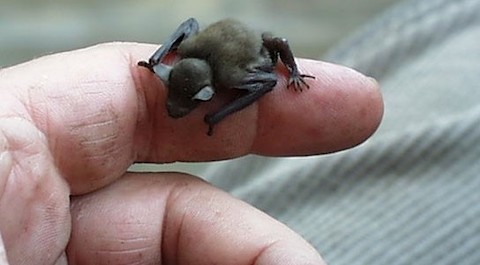
- Bats occupy a diversity of ecological niches across the globe, spending their days in the shade of caves, leaves or structures and spending their nights hunting for food.
- There are a variety of highly specialized bats.
- Although they sound scary, vampire bats are just 2 to 4 in (5–10 cm) long, and live only in South and Central America. They use their sharp teeth to puncture the skin of sleeping livestock, then lap up blood that pools in the wound. These bats are known to share food with injured or weak members of their species and care for their pups as one community.
- Mexican fish-eating bats have long claws for catching fish in the Gulf of California. They spend so much time at sea, they have adapted to be able to drink salt water and are sometimes classified as marine mammals.
- Some forest-dwelling bats in Central and South America have evolved feet shaped like sucker cups so they can stick to leaves. Bats in Madagascar separately developed the same practical type of feet for the same purpose.
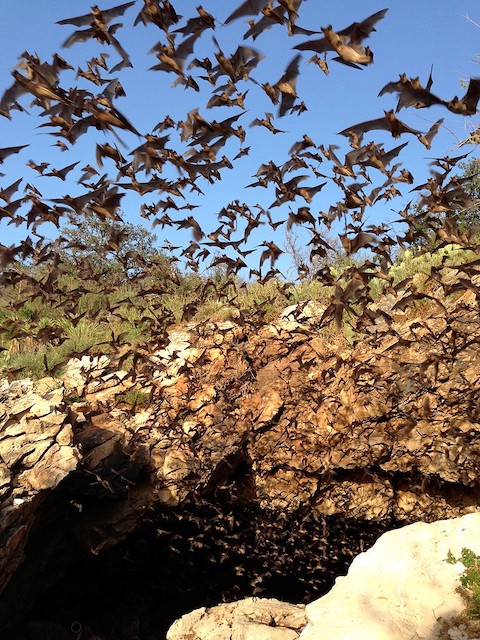
- Bats are Earth’s only flying mammals. Animal flight developed three times in Earth’s history, in three distinct classes of creatures: nondinosaur reptiles, avian dinosaurs and mammals.
- During the Late Triassic Period, around 228 million years ago, certain reptiles developed the ability to fly, but these pterosaurs perished 66 million years ago at the same time as the dinosaurs (ED-113 Pterosaurs).
- Avian dinosaurs didn’t evolve the capability of flight until 150 million years ago, more than 75 million years after pterosaurs did. In the Late Jurassic and Cretaceous Periods, they flew alongside pterosaurs for almost 85 million years. Unlike the pterosaurs, avian dinosaurs survived the fateful Chicxulub impact to become today’s birds.
- Sometime after the Chicxulub impact, the Chiroptera Order of mammals followed a similar evolutionary path, with fossils demonstrating that by 52 million years ago, in the Eocene Epoch, early bats fluttered around the skies of what is now Wyoming.
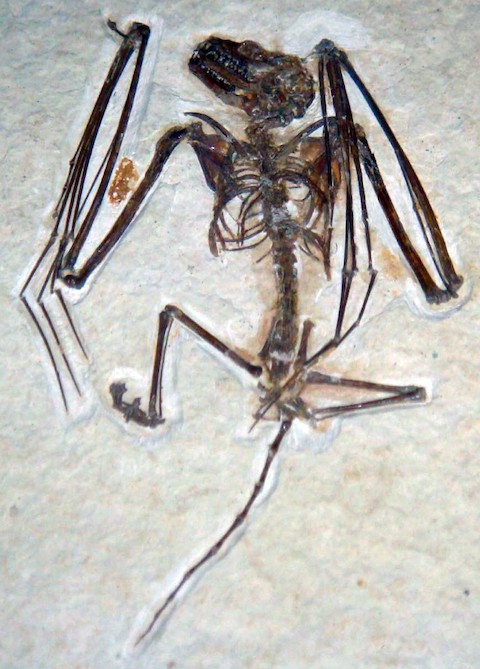
- Early Eocene bats evolved to look very much like modern bats, with wings that enabled powered, flapping flight.
- Studies of their inner ear bones show that some species were probably able to echolocate, while others could not and must have had to rely on sight for hunting.
- Moth remains found in the fossil bats’ stomach areas indicate they were insectivores, like many of today’s bats.
- They had limbs adapted for climbing rocks and trees.
- Backward feet and internal organ positions suggest the fossilized bats slept upside down, like modern bats.
- Scientists are still looking for fossil evidence of the precursors to the Eocene flying bats to work out how the ancient mammals began their evolutionary quest for flight.
- Bats are still the only mammals that can fly, but flying squirrels can glide using skin flaps between their appendages. Maybe that is how bats got their start.
- Bats provide billions of dollars’ worth of agricultural ecosystem services by pollinating crops, dispersing seeds and fertilizer and controlling pests.
- More than 500 species of plants depend on pollen- and nectar-feeding bats to pollinate their flowers. Some bat species are the only pollinators for certain bananas, mangoes, and succulents like cacti. The plants attract bats by producing white flowers that bloom at night and smell like fermenting fruit. This is how the key ingredient of tequila, the blue agave, is pollinated.
- Over 300 species of plants depend on fruit-eating bats to spread their seeds and fertilize soil through their nitrogen-rich droppings that enable photosynthesis. Bat guano has long been used as a natural fertilizer in farming and was used in the manufacture of gunpowder during the Civil War.
- As the main predator of agricultural pests like moths, each year insect-eating bats provide somewhere between $3 billion and $53 billion dollars of pest control to the agricultural industry.
- From the standpoint of health-related pest control, a single bat may consume 500–1,000 mosquitoes per hour, including those that can carry dangerous diseases like Zika, dengue and malaria.
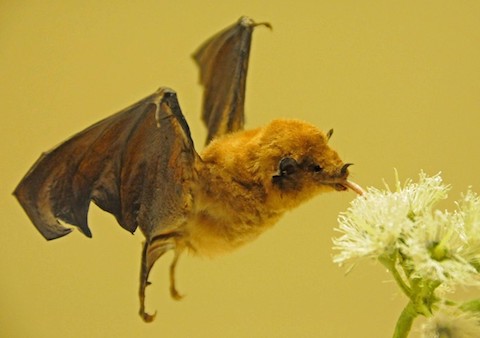
- With their unique immune systems, bats can tolerate pathogens that are lethal to other mammals.
- Some bat species do not even carry any genes that trigger inflammatory response.
- Their immune system responds to viruses and other pathogens without causing the inflammation that other mammals suffer when their immune system is active, like swelling and fever.
- This means they can pass pathogens to other bats and sometimes to other mammals where viruses can evolve to zoonotically jump to humans.
- The effort of flying causes bat body temperature to spike to 100°F to 106°F (38–41°C) every time they fly, so viruses that originally evolved in bats may not be affected by the key defense mechanism that human immune systems use to kill off pathogens—fevers.
- Some bat species do not even carry any genes that trigger inflammatory response.
- Recently, bats have taken the blame for the zoonotic spillover of several viruses into humans: severe acute respiratory syndrome (SARS)–related coronavirus, Middle East respiratory syndrome(MERS)–related coronavirus and the Ebola virus.
- Bats are likely the original carriers of these viruses, but they did not cause the spillover to occur into other species and humans.
- These viral jumps occur through infection of an intermediary mammal before they reach humans, but figuring out the go-between host animal is very difficult.
- Infectious-disease experts blame human activity for the situation.
- They attribute zoonotic spillover to destruction of habitat forcing bats closer to people and other animals in close quarters such as wet markets.
- These experts attribute rapid transmission of these viruses to rapid global movements of people in land vehicles, ships and planes.
- For their size, bats have exceptional longevity.
- Typically, larger animals have longer lifespans than smaller animals, but some bats live four times longer than similarly sized mammals. One individual was captured 41 years after it was originally banded.
- When adjusted for size, bats live longer than humans.
- As they age, bats steadily increase their production of mRNA that repairs their DNA, preventing molecular damage from accumulating. Other mammals do the opposite as they age.
- Understanding bat biological functions may provide insights for future human disease treatment and prevention as well as healthy aging.
- Many things threaten global bat populations, including encroachment and destruction of habitat, pesticides, changing weather patterns and diseases.
- In North America alone, more than 18% of bat species are endangered and at risk of extinction.
- Even bat populations that are not endangered are seeing population decreases tied to habitat loss and to a deadly fungal disease called white-nose syndrome.
- White-nose syndrome is caused by a fungus called Pseudogymnoascus destructans that grows in damp, dark places like the caves where bats roost.
- While bats are hibernating, the fuzzy white fungus attacks and covers the bare skin on the their faces.
- The fungus causes changes in the bats, waking them from hibernation early and causing odd spurts of activity. This, in turn, causes the bats to burn the fat that they need to survive the winter.
- About a dozen North American bat species have seen their numbers drop by 90% in the past 15 years as a result of the disease, which appears to have been introduced to their caves from Europe by human visitors.
- Bats are successful because of their amazing physiological adaptations developed over the course of more than 50 million years. As fellow mammals, our health is tied closely to theirs.
